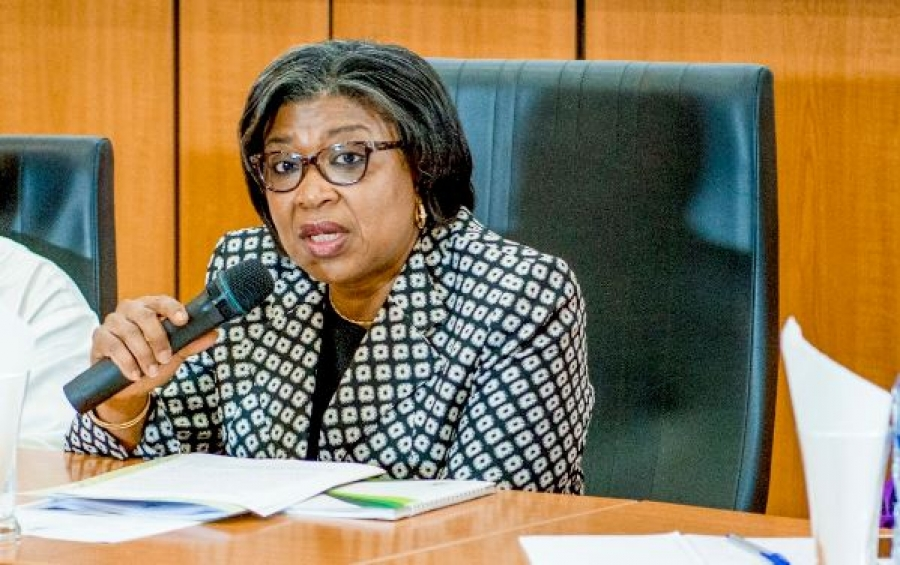Debt service gulped N6.16tn in 16 months, according to the 2023-2025 Medium Term Expenditure Framework & Fiscal Strategy Paper.
In 2021, the Federal Government spent N4.22tn on debt service, and further N1.94tn between January and April 2022.
A breakdown shows that domestic debt service cost N2.05tn, while foreign debt service gulped N946.29bn in 2021. There was also N600m sinking fund and N1.22tn interest on ways and means, which is defined as the government borrowing from the Central Bank of Nigeria.
In the first four months of 2022, domestic debt servicing cost was N1.2tn, whereas foreign debt service expenditure amounted to N334.24bn. There was also N405.93bn interest on ways and means.
The Federal Government further projected that debt servicing to cost N10.43tn by 2025, according to the 2023-2025 MTEF/FSP document.
This is a 182.66 per cent increase from the N3.69tn budgeted for debt service in 2022.
Multilateral agencies and economists have constantly warned the Federal Government about the rising cost of debt servicing, which could trigger a crisis for the country.
However, the Minister of Finance, Budget and National Planning, Dr Zainab Ahmed, and the Director General of the Debt Management Office, Patience Oniha, have insisted that the country does not have a debt problem but a revenue challenge.
In a document by the DMO DG recently obtained by our correspondent, the DMO stated that high debt levels would often lead to high debt services and affect investments in infrastructure.
According to the DMO DG, “High debt levels lead to heavy debt service which reduces resources available for investment in infrastructure and key sectors of the economy.”
In the document, she stressed the need for debt sustainability, which she defined as the ability to service all current and future obligations, while maintaining the capacity to finance policy objectives without resort to unduly large adjustments or exceptional financing such as arrears accumulation and debt restructuring, which could otherwise compromise the economy’s stability.
Speaking at the launch of the World Bank’s Nigeria Development Update titled, ‘The urgency for business unusual,’ held recently in Abuja, the finance minister had admitted that Nigeria was struggling to service its debt.
She said, “Already, we are struggling with being able to service debt because even though revenue is increasing, the expenditure has been increasing at a much higher rate, so it is a very difficult situation.”
The International Monetary Fund had earlier warned that debt servicing might gulp 100 per cent of the Federal Government’s revenue by 2026 if the government failed to implement adequate measures to improve revenue generation.
According to the IMF’s Resident Representative for Nigeria, Ari Aisen, based on a macro-fiscal stress test that was conducted on Nigeria, interest payments on debts might wipe up the country’s entire earnings in the next four years.
Aisen said, “The biggest critical aspect for Nigeria is that we have done a macro-fiscal stress test, and what you observe is the interest payments as a share of revenue. As you see us in terms of the baseline from the Federal Government of Nigeria, the revenue of almost 100 per cent is projected by 2026 to be taken by debt service.”
“So, the fiscal space or the amount of revenues that will be needed and this, without considering any shock, is that most of the revenues of the Federal Government are now, in fact, 89 per cent and it will continue if nothing is done to be taken by debt service.”
Less than two months after Aisen’s warning, the finance minister disclosed that Nigeria used 118 per cent of its revenue to service debts.
The PUNCH also reported that Nigeria’s debt servicing bill increased by 109 per cent, from N429bn in December 2021 to N896bn in March 2022.
A report by the Nigerian Economic Summit Group and the Open Society Initiative for West Africa has disclosed that Nigeria and 10 other Economic Community of West African States countries were currently in debt distress based on debt sustainability analysis.
The 10 other countries are: Benin, Burkina Faso, Cabo Verde, the Gambia, Ghana, Guinea Bissau, Liberia, Niger, Senegal, and Togo.
The World Bank recently said that Nigeria’s debt, which might be considered sustainable for now, was vulnerable and costly.
According to the Washington-based global financial institution, the country’s debt was also at risk of becoming unsustainable in the event of macro-fiscal shocks.
The World Bank recently said that Nigerian states would likely lose N18.8bn in oil and gas revenues in 2022, as worsening revenue collection at the federation level would increase budgetary pressures for the states.
According to the global lender, the declining revenue from the federation had put many states in a precarious fiscal position.
The financial institution also warned that there would be a 2.7 per cent decline in FAAC transfers in 2022 when compared to 2021, noting that this decline would push states to borrow more and slash discretionary expenditure.
The Chief Executive Officer of Centre for the Promotion of Private Enterprise, Dr Muda Yusuf, said that the Nigerian economy had been characterised by diverse economic vulnerabilities, which included rising public debt and debt service burden.
He said, “Debt service to revenue ratio for the first four months of the current year is over 100 per cent. The implication of this is that the actual revenue of the government over the period is not sufficient to service debt. Therefore, financing of the operations of government – personnel cost, overhead cost, capital expenditure, and even part of the servicing of the debt – will have to come from additional borrowing. These portend severe vulnerabilities for the Nigerian economy.”










